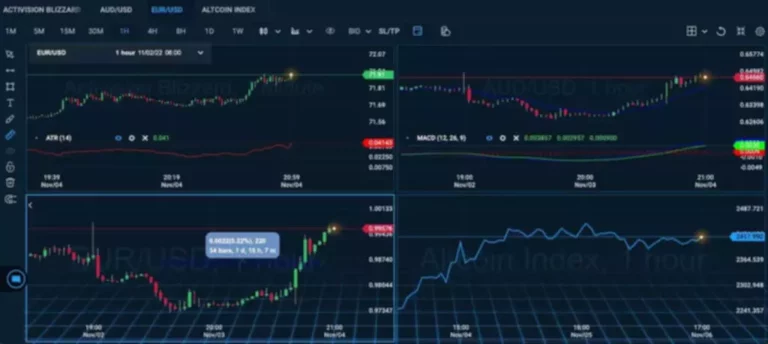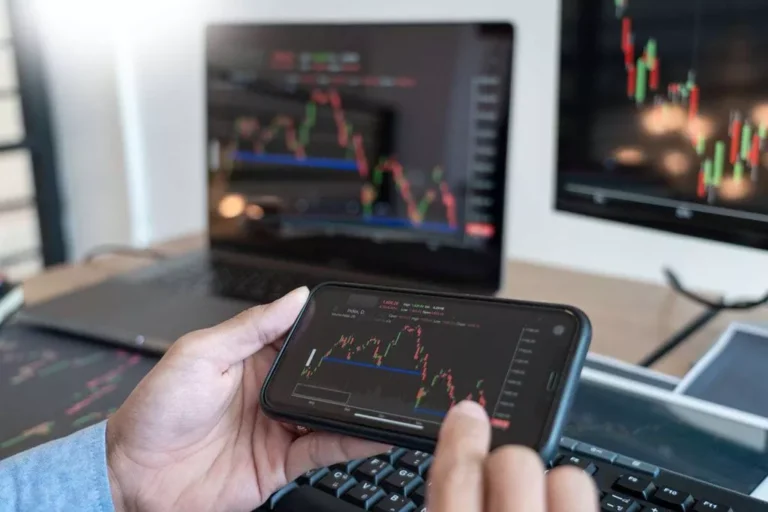Content
One day, you may see the value of a coin skyrocketing, only to watch it plummet the next. For many, these unpredictable shifts in price — known as crypto volatility — are both thrilling and challenging. If you’re investing or trading in crypto, understanding volatility and how to manage it is essential. This can create a positive reflexive feedback loop with high (but unsustainable) demand for an asset, https://www.xcritical.com/ causing major price movements. Therefore, it is difficult for large players to enter or leave the market at ‘size’, without affecting prices and moving the market. The high volatility nature of cryptocurrencies also poses many risks for investors and traders.
Bitcoin Volatility Index (BitVol) and Crypto Volatility Index (CVI)
Spread your investments across multiple tokens to reduce risk while capturing opportunities in different markets. Volatility isn’t just for traders—it can also benefit investors who prefer a long-term approach. While this isn’t foolproof, knowing what the crowd is thinking crypto volatility can help you anticipate movements.
Why Does Cryptocurrency Volatility Matter?
Dollar-cost averaging is Smart contract a strategy where you invest a fixed amount at regular intervals, regardless of the price. This approach smooths out your entry points, reducing the impact of volatility. Instead of trying to time the market, DCA helps you accumulate assets steadily over time. Before investing in any cryptocurrency, it’s essential to research the project. Look into its use case, the team behind it, its partnerships, and long-term potential.
Stay Informed, But Avoid Overreacting to News
The cryptocurrency market has grown exponentially, boasting over 10,000 different cryptocurrencies. While some have strong fundamentals and practical use cases, many others lack substance and are driven primarily by speculation. Understanding which type of crypto wallet is right for you is a crucial step in your investment journey. Crypto wallets come in various forms, each offering distinct features and levels of security. There are many reasons for crypto’s volatility — and much uncertainty about if or how the crypto market will take further steps toward regulation, insurability, security and stability.
How do Traders Handle Volatility in Cryptocurrency?
Remember, cryptocurrency trading involves substantial risk, and it’s essential to do your due diligence before making any trading decisions. Most observers of cryptocurrency markets will agree that crypto volatility is in a different league altogether. In 2016, the price of bitcoin rose by 125% and in 2017 the price rose again, this time by more than 2,000%. Following the 2017 peak that saw it hit new all-time highs, bitcoin’s price receded once more.
Other indicators, like the Volatility Index (VIX), provide insights into the market’s expected volatility by analyzing options pricing. Traders often combine multiple volatility indicators to gain a comprehensive understanding of market conditions and develop well-informed trading strategies. In the ever-evolving world of cryptocurrency trading, volatility is a constant. It presents both risks and rewards, challenging both novice and experienced traders. To navigate the stormy seas of crypto volatility, it’s critical to arm yourself with the right tools. Among these, volatility indicators stand out for their ability to help predict price changes and market trends.
Under the sway of day traders and speculators, crypto prices sometimes exhibit healthy volatility of the type we see in mainstream markets. As mentioned above, market volatility, in general, refers to the degree of price variation within a particular market. In the context of cryptocurrencies, the volatility reflects the rapid and often substantial price fluctuations observed in the digital asset space. Crypto volatility is driven by a myriad of factors that contribute to the unpredictable price fluctuations experienced by digital assets.
Many of the reasons for price volatility in mainstream markets hold true for cryptocurrencies as well. News developments and speculation are responsible for fueling price swings in crypto and mainstream markets alike. Heightened volatility and a lack of liquidity can create a dangerous combination because both feed off of each other. Other than bitcoin, most other cryptocurrencies also lack established and widely adopted derivatives markets.
This high potential for earning can give a trader reason to risk their funds; the thinking is that since crypto moves quickly and constantly, there is always the potential to earn. The first and largest cryptocurrency is so dominant that it constantly dictates the price behavior of other assets. If Bitcoin price is seeing a severe drop, most cryptocurrencies tend to follow, regardless of their personal developments and news. Naturally, this is quite overwhelming, which is why crypto trading is so risky. DYdX equips eligible traders with the tools to navigate the crypto market’s volatility.
High volatility is indicated by larger and more frequent price movements, while the opposite holds true for low volatility. If you want to trade cryptocurrencies it’s to your advantage to learn all that you can about blockchain technology and the crypto industry, including its risks. Healthy volatility is always there, even when prices are relatively stable.
- For example, if a token’s value tends to rise in the afternoon and drop at night, you can plan trades around this pattern.
- As such, it is conceivable that as Bitcoin matures as an asset class, Bitcoin volatility will sink and become more clearly distinguished from overall crypto volatility.
- Other indicators, like the Volatility Index (VIX), provide insights into the market’s expected volatility by analyzing options pricing.
- Regulatory decisions by governments and central banks also play a crucial role, triggering substantial price movements.
- All in all, since leverage increases the volatility of crypto assets, traders should carefully consider the risks of this method and use strategies like stop-loss orders to avoid liquidation.
- More recently, everyone saw what can happen if a group of investors decides to target a single stock.
That overall confidence has been strongly reflected in cryptocurrency prices, for example, pushing Bitcoin from $3,700 at the end of 2018 to an all-time high of $64,800 in April 2021. If you were to buy Bitcoin in 2018, when many said the bubble had burst, you would have been rich by the early days of May. But by the end of May, you would have lost nearly 50% of your crypto earnings due to a massive price drop.
By understanding the twists and turns of crypto volatility, individuals can navigate the market confidently, seize opportunities, and manage risks effectively. Regulatory decisions and announcements by governments and regulatory bodies may have a profound impact on Bitcoin’s volatility. Conversely, regulatory crackdowns or negative announcements can induce fear and trigger price downturns. Notable examples include China’s ban on cryptocurrency mining and the subsequent market reactions. Increased investor interest and growing adoption can create upward price momentum, leading to substantial price surges. Conversely, a decrease in demand or negative market sentiment can trigger sharp price declines.
For instance, after Bitcoin peaked at nearly $65,000 per coin in 2021, it dropped to sub-$20,000 within one year. And other cryptocurrencies (aka altcoins) like Ethereum (ETH), Solana (SOL), and Dogecoin (DOGE) are just as—if not more—susceptible to wild price swings. With years of experience in technical and crypto writing, I am a highly skilled writer who enjoys breaking down complex topics into easy-to-understand pieces. My expertise lies in the technology, open-source, blockchain, and cryptocurrency industry, where I strive to deliver engaging and informative content that educates and empowers readers. Support and resistance levels are significant price levels that traders closely monitor. Support levels act as a floor, where buying pressure is expected to outweigh selling pressure, potentially leading to a price increase.




